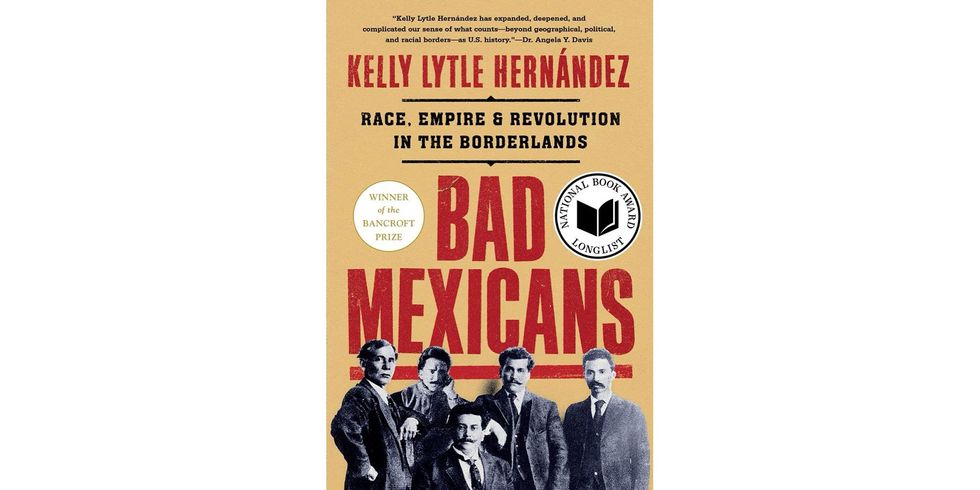They lit the pyre and watched him burn. Antonio Rodríguez, a twenty-year-old ranch hand, murdered a white woman, they said. White men from nearby farms formed a posse to track him down, while the other residents of Rocksprings, Texas, some four hundred of them, met at the edge of town and piled kindling at the base of a mesquite tree. The posse soon arrived, with a cowboy in the lead, dragging Rodríguez by a lasso looped around his neck. The mob laughed as they chained Antonio to the tree and doused him in kerosene. Someone threw a match and, thirty minutes later, when Antonio Rodríguez was dead, the residents of Rocksprings “returned quietly to town and business was resumed.” It was November 3, 1910.
Mexican American journalists in the U.S.-Mexico borderlands reported the grisly details of Rodríguez’s murder, condemning it as an act of racial terror akin to the lynching of African Americans in the South. Newspapers in Mexico picked up the story. “Lynching is not practiced by the blonde ‘Yankee’ except upon beings whom, for ethnic reasons, he considers his inferiors,” fumed the editors of the Mexico City paper El Debate. Another paper dubbed Anglo-Americans the “barbarous whites of the north,” deriding them as the “giants of the dollar” but “pygmies of culture.” “There is indignation among Mexicans here over this lynching,” reported El País.
By November 8, riots had erupted across Mexico. Targeting the considerable number of U.S.-owned businesses and homes, the protestors smashed windows and tore down American flags while chanting “Mueran los yanquis!” (Death to the Americans!) The police arrested hundreds of people. In one case, officers drew sabers and descended upon a crowd, killing one man by stabbing him through the neck. The protests continued, on the streets and in the press, prompting Henry Lane Wilson, the U.S. ambassador to Mexico, to issue a public warning: the United States government “will leave nothing undone” to protect U.S. citizens and property in Mexico. It was a threat: the United States would invade Mexico if attacks on U.S. interests did not cease. The protests raged on. Ambassador Wilson decided to visit General Porfirio Díaz, the dictator of Mexico, to insist that he put a stop to the “anti-American disturbances.”
Porfirio Díaz had ruled Mexico for twenty-seven years. Seizing the Mexican presidency by coup d’état in 1876, the general had thrown open the doors of his country, handing out land and tax incentives to foreign investors. He also guaranteed pliant labor. Tens of thousands of U.S. investors rushed in, ranging from the Rockefellers to one-pick miners, making Mexico the first country where U.S. citizens made significant foreign investment. U.S. citizens soon controlled key sectors of the Mexican economy: railroads, oil, and mining. By 1900, they owned 130 million acres, amounting to one-quarter of Mexico’s arable land. By 1910, fully half of all money invested by Americans overseas—more than $500 million—went to Mexico. And they expected President Díaz to protect their interests.
Díaz used foreign capital to industrialize the Mexican economy, often with little regard for the rights and wellbeing of Mexico’s poorest citizens. When investors bought land claimed by Mexico’s rural and Indigenous communities, Díaz dispatched soldiers to evict any stragglers or protestors. Most notoriously, when the Yaqui refused to be removed from their homeland, Díaz deported the rebel fighters, and their families, to labor camps in the jungles of southern Mexico. When industrial workers protested the low wages and dangerous working conditions that prevailed at mines, mills, and factories, Díaz ordered troops to fire on the picket lines. In 1907, during a strike in Rio Blanco, Díaz’s troops killed at least fifty picketers on a single morning. And, across Mexico, Díaz maintained a deadly mobile strike force, the rurales, to terrorize his regime’s critics. The rurales killed more than ten thousand people during Díaz’s rule.•
Excerpted from Bad Mexicans: Race, Empire, and Revolution in the Borderlands, by Kelly Lytle Hernández. Copyright © 2022 by Kelly Lytle Hernández. Used with permission of the publisher, W. W. Norton & Company, Inc. All rights reserved.













